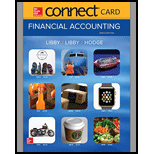
Concept explainers
1.
Compute the amount of dividends, in total and per share, that would be payable to each class of stockholder’s for each case.
1.
Explanation of Solution
Preferred stock:
The stock that provides a fixed amount of return (dividend) to its stockholder before paying dividends to common stockholders is referred as preferred stock.
Common stock:
These are the ordinary shares that a corporation issues to the investors in order to raise funds. In return, the investors receive a share of profit from the profits earned by the corporation in the form of dividend.
Retained earnings are the portion of earnings kept by the business for the purpose of reinvestments, payment of debts, or for future growth.
Cash dividends:
The amount of cash provided by a corporation out of its distributable profits to its shareholders as a return for the amount invested by them is referred as cash dividends.
Compute the amount of dividends, in total and per share, that would be payable to each class of stockholder’s for each case:
Case A: Preferred is noncumulative and the total amount of all dividends is $25,000.
| Particulars |
Preferred Stock of 21,000 shares (Amount in $) |
Common Stock of 500,000 shares (Amount in $) |
Total (Amount in $) |
| 16,800 | 16,800 | ||
| Balance carried to common stock | (1)8,200 | 8,200 | |
| 16,800 | 8,200 | 25,000 | |
| Per share value | (2) 0.80 | (3) 0.016 |
(Table 1)
Working Notes:
Case B: Preferred is cumulative and the total amount of all dividends is $25,000.
| Particulars |
Preferred Stock of 21,000 shares (Amount in $) |
Common Stock of 500,000 shares (Amount in $) |
Total (Amount in $) |
| Preferred shares: | |||
| Arrears | 25,000 | 0 | 25,000 |
| Current year | 0 | 0 | 0 |
| 25,000 | 0 | 25,000 | |
| Per share value | (4) 1.19 | 0 |
(Table 2)
Working Notes:
Case C: Preferred is cumulative and the total amount of all dividends is $75,000.
| Particulars |
Preferred Stock of 8,000 shares (Amount in $) |
Common Stock of 35,000 shares (Amount in $) |
Total (Amount in $) |
| Preferred shares: | |||
| Arrears | 33,600 | 0 | 33,600 |
| Current year | 16,800 | 0 | 16,800 |
| Balance of common stock | 0 | 24,600 | 24,600 |
| 50,400 | (5) 24,600 | 75,000 | |
| Per share value | (6) 2.40 | (7)0.049 |
(Table 3)
Working Notes:
2.
Explain the manner by which stock dividend will be compared to case C if company issues a 40% common stock dividend on the outstanding shares and if the market value per share is $50.
2.
Explanation of Solution
| Schedule of Comparative Differences | ||
| Item | Amount of Dollar Increase (Decrease) | |
| Cash Dividend – Case C | Stock Dividend | |
| Assets | There is a decrease in the value of cash by $75,000. | No change |
| Liabilities | The liabilities increase by $75,000 when cash dividend is declared and it decreases during the payment of cash dividend. | No change |
| Retained earnings of the company reduce by $75,000. |
Stockholder’s equity will not change on declaration of stock dividend. The retained value gets reduced due to declaration of dividend and there will be equal increase in the value of common stock | |
(Table 4)
Want to see more full solutions like this?
Chapter 11 Solutions
Connect Access Card for Financial Accounting
- Please provide the solution to this financial accounting question with accurate financial calculations.arrow_forwardPlease explain the solution to this general accounting problem using the correct accounting principles.arrow_forwardCan you explain the correct methodology to solve this general accounting problem?arrow_forward
- Can you solve this financial accounting question with the appropriate financial analysis techniques?arrow_forwardI need the correct answer to this general accounting problem using the standard accounting approach.arrow_forwardPlease give me true answer this financial accounting questionarrow_forward
- I need help solving this general accounting question with the proper methodology.arrow_forwardCan you help me solve this general accounting problem using the correct accounting process?arrow_forwardPlease provide the accurate answer to this general accounting problem using valid techniques.arrow_forward
 Intermediate Accounting: Reporting And AnalysisAccountingISBN:9781337788281Author:James M. Wahlen, Jefferson P. Jones, Donald PagachPublisher:Cengage LearningPrinciples of Accounting Volume 1AccountingISBN:9781947172685Author:OpenStaxPublisher:OpenStax College
Intermediate Accounting: Reporting And AnalysisAccountingISBN:9781337788281Author:James M. Wahlen, Jefferson P. Jones, Donald PagachPublisher:Cengage LearningPrinciples of Accounting Volume 1AccountingISBN:9781947172685Author:OpenStaxPublisher:OpenStax College Managerial Accounting: The Cornerstone of Busines...AccountingISBN:9781337115773Author:Maryanne M. Mowen, Don R. Hansen, Dan L. HeitgerPublisher:Cengage Learning
Managerial Accounting: The Cornerstone of Busines...AccountingISBN:9781337115773Author:Maryanne M. Mowen, Don R. Hansen, Dan L. HeitgerPublisher:Cengage Learning Excel Applications for Accounting PrinciplesAccountingISBN:9781111581565Author:Gaylord N. SmithPublisher:Cengage Learning
Excel Applications for Accounting PrinciplesAccountingISBN:9781111581565Author:Gaylord N. SmithPublisher:Cengage Learning Financial AccountingAccountingISBN:9781305088436Author:Carl Warren, Jim Reeve, Jonathan DuchacPublisher:Cengage Learning
Financial AccountingAccountingISBN:9781305088436Author:Carl Warren, Jim Reeve, Jonathan DuchacPublisher:Cengage Learning





